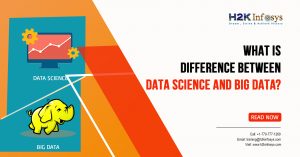In the realm of data science, Python reigns supreme as the go-to programming language. Its versatility, extensive libraries, and supportive community make it an essential tool for data scientists. Whether you’re a seasoned professional or an aspiring data scientist, acing a Python data science interview requires a solid understanding of both Python fundamentals and advanced data science concepts. This blog post will delve into common Python data science interview questions, helping you prepare for your next interview and boosting your confidence.
Introduction to Python for Data Science
Python is a high-level, interpreted programming language known for its simplicity and readability. In data science, Python’s extensive libraries—such as NumPy, pandas, Matplotlib, and Scikit-learn—enable efficient data manipulation, analysis, and visualization. The language’s flexibility allows for easy integration with other technologies, making it a versatile choice for data scientists.
Basic Python Concepts
Q1: What are Python’s basic data types?
Answer: Python has several built-in data types, including integers (int), floating-point numbers (float), strings (str), lists (list), tuples (tuple), dictionaries (dict), and sets (set). Understanding these data types is fundamental, as they are the building blocks of data manipulation in Python.
Q2: How do you handle exceptions in Python?
Answer: In Python, exceptions are handled using the try and except blocks. The try block contains code that may potentially cause an exception, while the except block contains the code to manage the exception. Optionally, finally and else blocks can be used for cleanup actions or to execute code that should run only if no exceptions were raised.
try:
# Code that may raise an exception
result = 10 / 0
except ZeroDivisionError:
# Code to handle the exception
print("Division by zero is not allowed.")
finally:
print("Execution completed.")Q3: What is a list comprehension, and how is it used?
Answer: A list comprehension is a concise way to create lists in Python. It consists of an expression followed by a for clause, and can include optional if clauses. List comprehensions are more readable and faster than traditional loops for creating lists.
# Traditional loop
squares = []
for i in range(10):
squares.append(i**2)
# List comprehension
squares = [i**2 for i in range(10)]Data Manipulation with pandas
Q4: What is pandas, and why is it important in data science?
Answer: pandas is a Python package designed for efficient data manipulation and analysis. It provides data structures such as DataFrames and Series, which are essential for handling structured data. With pandas, data scientists can efficiently clean, transform, and analyze large datasets.
Q5: How do you handle missing data in pandas?
Answer: Missing data in pandas can be handled using various methods, such as:
dropna(): Removes rows or columns with missing values.
fillna(): Fills missing values with a specified value, such as a constant or the mean of the column.
isnull(): Detects missing values and returns a Boolean mask.
import pandas as pd
data = pd.DataFrame({'A': [1, 2, None, 4], 'B': [None, 2, 3, 4]})
# Dropping rows with missing values
data.dropna()
# Filling missing values with the mean
data.fillna(data.mean())Q6: How do you merge two DataFrames in pandas?
Answer: In pandas, two DataFrames can be merged using the merge() function, which supports various types of joins: inner, outer, left, and right. The merge() function requires specifying the columns to join on, using the on parameter, or separate columns from each DataFrame using the left_on and right_on parameters.
df1 = pd.DataFrame({'key': ['A', 'B', 'C'], 'value1': [1, 2, 3]})
df2 = pd.DataFrame({'key': ['A', 'B', 'D'], 'value2': [4, 5, 6]})
# Inner join
merged_df = pd.merge(df1, df2, on='key')Numerical Computation with NumPy
Q7: What is NumPy, and how is it used in data science?
Answer: NumPy is a Python library that offers support for numerical computing, including arrays, matrices, and a suite of mathematical functions to perform operations on these data structures. NumPy is foundational for scientific computing and is widely used in data science for tasks such as data manipulation, linear algebra, and statistical operations.
Q8: How do you create an array in NumPy?
Answer: In NumPy, arrays can be created using the array() function, which takes a list or tuple as an argument. NumPy also provides functions like zeros(), ones(), and arange() for creating arrays with specific values.
import numpy as np
# Creating an array from a list
arr = np.array([1, 2, 3, 4, 5])
# Creating an array of zeros
zeros = np.zeros((3, 3))
# Creating an array with a range of values
range_arr = np.arange(0, 10, 2)Q9: How do you perform element-wise operations in NumPy?
Answer: NumPy supports element-wise operations, allowing for efficient computation across arrays. Operations such as addition, subtraction, multiplication, and division can be performed directly on NumPy arrays.
arr1 = np.array([1, 2, 3])
arr2 = np.array([4, 5, 6])
# Element-wise addition
sum_arr = arr1 + arr2
# Element-wise multiplication
prod_arr = arr1 * arr2Data Visualization with Matplotlib and Seaborn
Q10: What is Matplotlib, and how is it used in data science?
Answer: Matplotlib is a Python library used to generate static, animated, and interactive visualizations. It is widely used in data science for plotting data, creating charts, and visualizing trends. Seaborn, built on top of Matplotlib, provides additional features for statistical plotting.
Q11: How do you create a simple line plot in Matplotlib?
Answer: A simple line plot can be created in Matplotlib using the plot() function. The xlabel(), ylabel(), and title() functions are used to label the axes and the plot.
import matplotlib.pyplot as plt
x = [0, 1, 2, 3, 4]
y = [0, 1, 4, 9, 16]
plt.plot(x, y)
plt.xlabel('X-axis')
plt.ylabel('Y-axis')
plt.title('Line Plot')
plt.show()Q12: What are some common types of plots in Seaborn?
Answer: Seaborn provides various types of plots for visualizing data, including:
scatterplot(): Displays the relationship between two numerical variables.
barplot(): Displays the relationship between a categorical and a numerical variable.
histplot(): Plots the distribution of a dataset.
heatmap(): Visualizes data in matrix form, often used for correlation matrices.
import seaborn as sns
# Creating a bar plot
sns.barplot(x=['A', 'B', 'C'], y=[1, 3, 2])Machine Learning with Scikit-learn
Q13: What is Scikit-learn, and how is it used in data science?
Answer: Scikit-learn is a Python library for machine learning.It offers straightforward and efficient tools for tasks such as data mining, data analysis, and machine learning. Scikit-learn supports various algorithms for classification, regression, clustering, and more.
Q14: How do you implement a simple linear regression model using Scikit-learn?
Answer: A simple linear regression model can be implemented using the LinearRegression class from Scikit-learn. The fit() method is used to train the model, while the predict() method is used to make predictions.
from sklearn.linear_model import LinearRegression
# Sample data
X = np.array([[1], [2], [3], [4], [5]])
y = np.array([2, 3, 4, 5, 6])
# Creating and training the model
model = LinearRegression()
model.fit(X, y)
# Making predictions
predictions = model.predict(np.array([[6]]))Q15: How do you evaluate a classification model’s performance?
Answer: The performance of a classification model can be evaluated using metrics such as accuracy, precision, recall, F1 score, and the confusion matrix. These metrics provide valuable information about how accurately the model can classify data.
from sklearn.metrics import accuracy_score, confusion_matrix
# Sample data
y_true = [0, 1, 1, 0, 1]
y_pred = [0, 0, 1, 0, 1]
# Calculating accuracy
accuracy = accuracy_score(y_true, y_pred)
# Creating a confusion matrix
conf_matrix = confusion_matrix(y_true, y_pred)Conclusion
Preparing for a Python data science interview requires a thorough understanding of Python fundamentals, data manipulation with pandas, numerical computation with NumPy, data visualization with Matplotlib and Seaborn, and machine learning with Scikit-learn. By familiarizing yourself with these key concepts and practicing common interview questions, you’ll be well-equipped to showcase your skills and knowledge during the interview process.
























